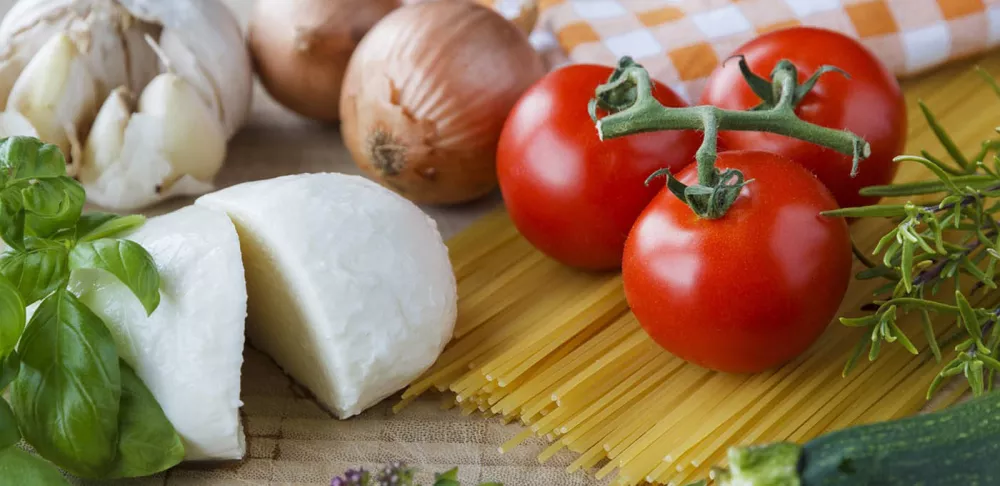“Cheese is milk’s leap toward immortality” is a quote credited to American intellectual, author and radio personality Clifton Fadiman.
If not quite immortal, the very nature of cheese is indeed to decrease the water content of dairy, making it stable, edible and enjoyable well beyond its capabilities in a fresh state, but cheese does have seasonality built into its DNA. While consumer culture has made most fruits and vegetables available year-round, chefs and farmers understand that cooking with the seasons and with produce that is sourced from close to home during its peak moment will always produce higher quality outcomes. The same holds true for cheese.
While not every cheese will be subject to seasonal variability, depending on its make and aging conditions, there are many cheeses that do express a strong sense of seasonality based on several factors.
At its simplest, animal breeding and lactation cycles are tantamount to when milk is available for cheesemaking, especially in farmstead operations, but as different cheeses are aged for varying amounts of time, that isn’t the only element that plays a part in the seasonality of cheese.
Fresh Cheese and Seasonality
One of the simplest ways to begin to understand the seasonality of cheese is with fresh cheeses. Fresh cheeses are those that are aged for a minimal amount of time, or sometimes not at all, and that never form a rind.
A cheese such as mozzarella, for example, goes from milk to cheese in a matter of hours. By contrast, even young, soft cheeses such as brie or camembert take at least a week to develop. Other examples of fresh cheeses include ricotta, cottage cheese, feta and chèvre, or fresh goat’s milk cheese. Fresh cheeses generally do not have the staying power of those cheeses that see even a little bit of aging, so they are typically consumed within a week from when the milk was initially collected, unless they are marinated or brined, as is the case with some feta.
Related Reading:5 Major Cheese Styles Every Chef Should Know
Fresh cheeses then can especially express different flavors throughout the year depending on animals’ diets. What they eat is often passed on to the flavor of their milk.
If you consume a lot of fresh cheese — and especially if you are sourcing it consistently from a local creamery, farm stand or farmer’s market — pay attention to how the flavor of the cheese evolves depending on when you are buying it.
Fresh cheeses in the spring might taste more floral, or even herbaceous, when animals may be grazing on flowers and greens that are early to pop out of the ground. Summer cheeses might express more sweet, grassy notes. In the winter, animals switch to a diet of dried hay, which is more neutral in flavor, but texture may change slightly as milk becomes fattier during this time.
Chefs can seek companion pairings for fresh cheeses — such as a burrata salad course — based on what seasonal flavors the cheese itself may subtly express.
Season-Specific Cheeses
As milk quality changes throughout the year depending on what animals are eating, certain cheeses are actually only made seasonally, to express the best qualities of the milk as it changes. Alpine cheeses such as Gruyère and Vacherin Mont d’Or are a particular example of this.
Gruyère sees a significant amount of aging, and is therefore stable for much longer than fresh cheese. While you can typically purchase Gruyère at any time of year, real Swiss Gruyère, (that is, Le Gruyère AOP) is only ever made with summer milk as a matter of practice, when herds are allowed to free graze on high Alpine pastures, and may consume not only grasses, but berries, nuts and even alliums such as wild onion and garlic, which give the milk and resulting cheese a deep complexity of flavor.
On the flip side, Vacherin Mont d’Or is also an Alpine cheese that is made in the winter, when the higher fat content of hay-fed animals contributes to a cheese that is especially rich and gooey. Because Vacherin Mont d’Or is a young cheese, without the same kind of shelf life as its firmer Alpine cousins, it is only available for a short amount of time in December and January.
Related Reading: All About Alpine Cheese
Stateside, we have similar seasonal cousins from Uplands Cheese in Wisconsin. They only make two cheeses: Pleasant Ridge Reserve from summer milk, and Rush Creek Reserve from winter milk, which resemble the Alpine cheeses above they are modeled after. Vermont Shepherd, a sheep’s milk creamery, also makes two seasonal cheeses, aptly named Verano, (summer) and Inverno (winter). While both cheeses are made from milk collected in the spring and summer, Verano is a young, delicate cheese aged for only a couple of months and available by August, where Invierno is processed differently and aged for longer, resulting in a bold, flavorful cheese that is on the market by December or January.
Cheese and Seasonal Holidays
Once a cheese has completed its affinage, or aging process, it is capable of lasting many months, or even years, depending on the cheese and how it is handled once out of the cheese cave. (Note: “cave” in modern cheesemaking rarely refers to a naturally occurring underground structure. Cheese caves refer to any structure where the temperature and humidity are controlled for ideal cheese conditions, and often resemble warehouses.)
That being said, there are certain cheeses that are traditionally eaten around certain holidays, when they would first become available in a given year. Much like the celebration of Beaujolais Nouveau in November, as the first taste of that year’s wine harvest, certain cheeses have a sense of holiday spirit about them.
Fresh chèvre often has an Easter feel about it, in the same way that lamb does, when fresh cheeses would have only been made during the animals’ instinctive breeding and lactation cycles, which typically occur in the spring. Stilton, an English blue cheese, is typically enjoyed with Port around Christmas, as milk collected in the summer and processed over about six months into Stilton first comes out of the cave around that time. Because the winter holidays are an especially decadent time, many limited release cheeses also capitalize on this vibe. In addition to Vacherin Mont d’Or and Rush Creek Reserve, mentioned above, Rogue Creamery’s exquisite Rogue River Blue is also offered only around this time.
Related Reading: Get to Know Blue Cheese






